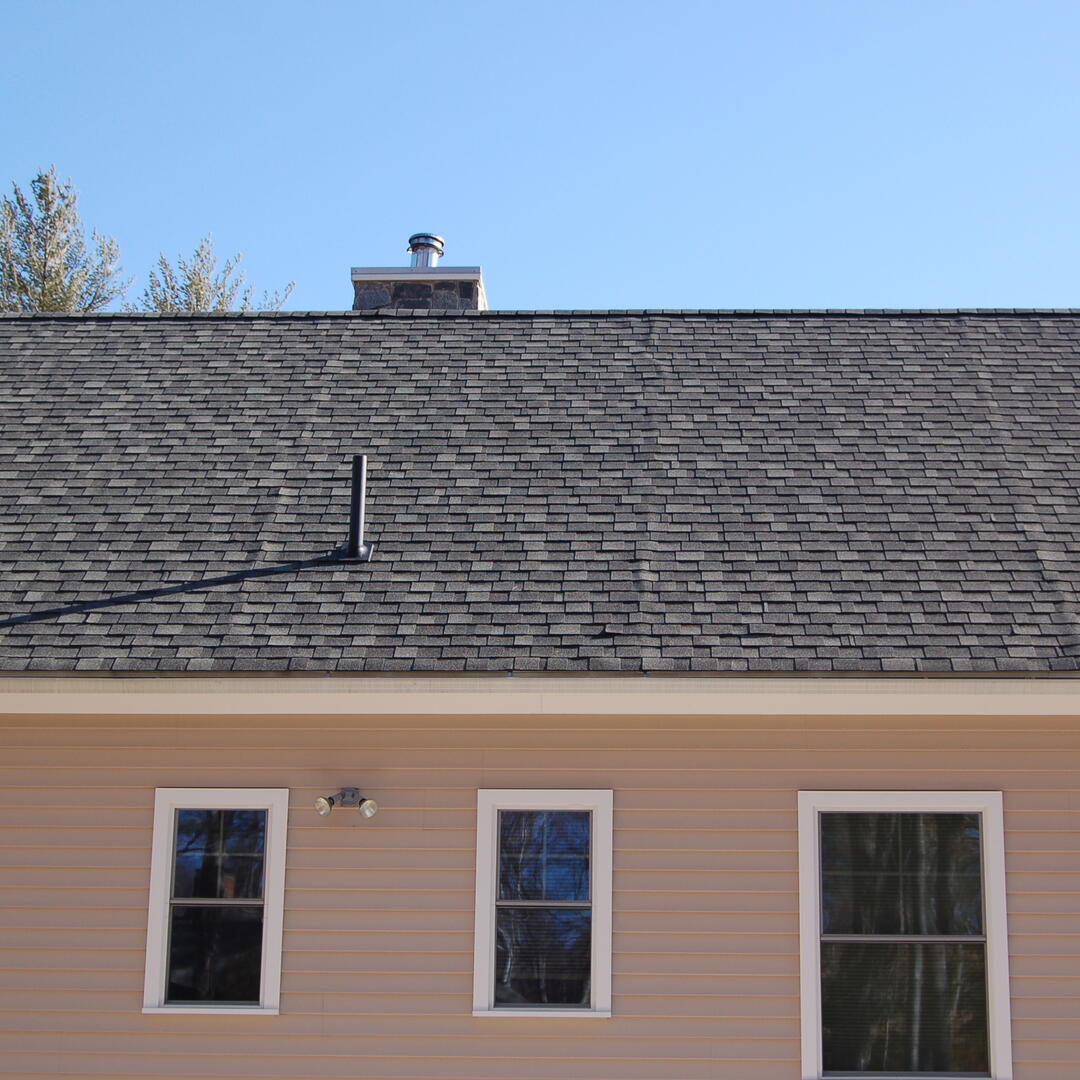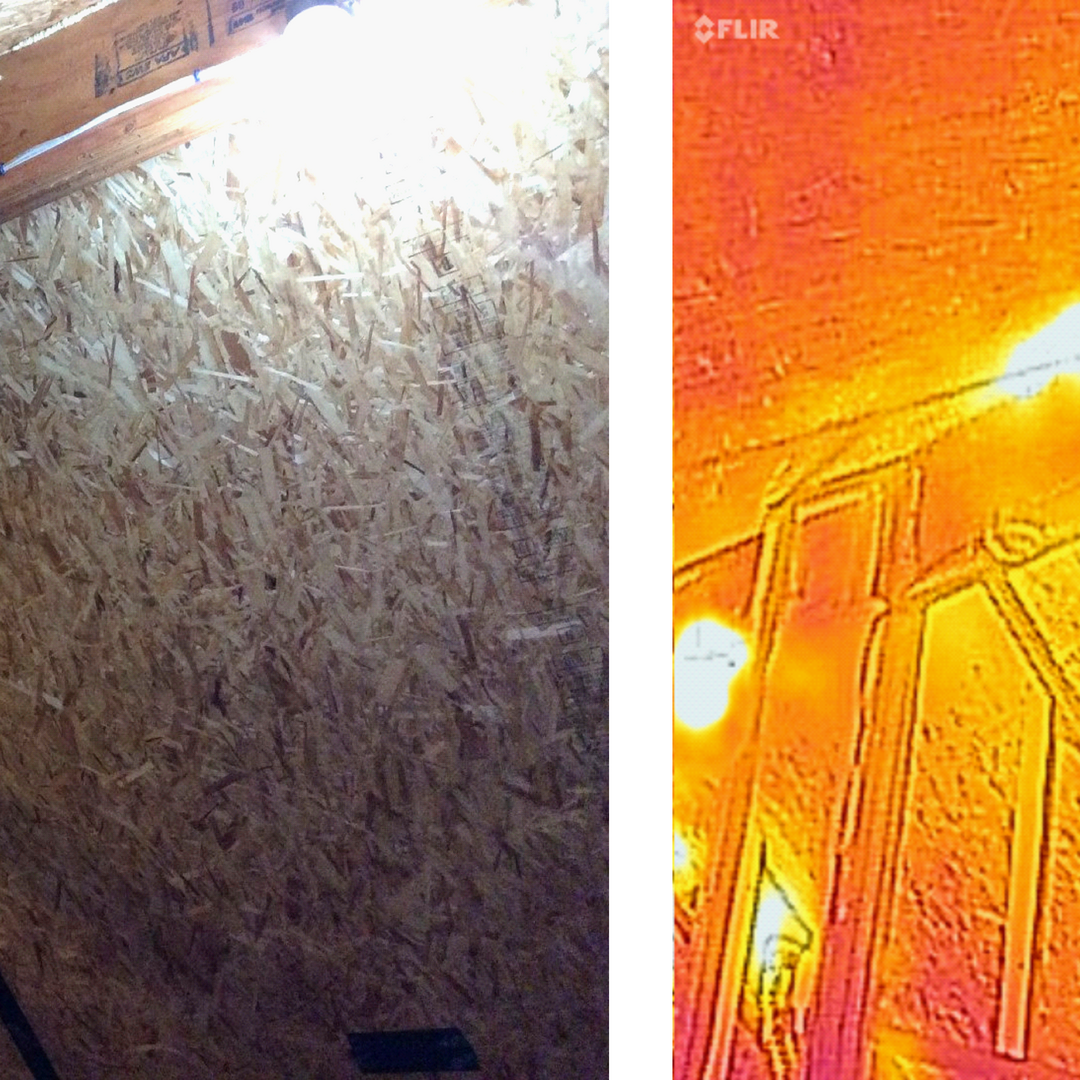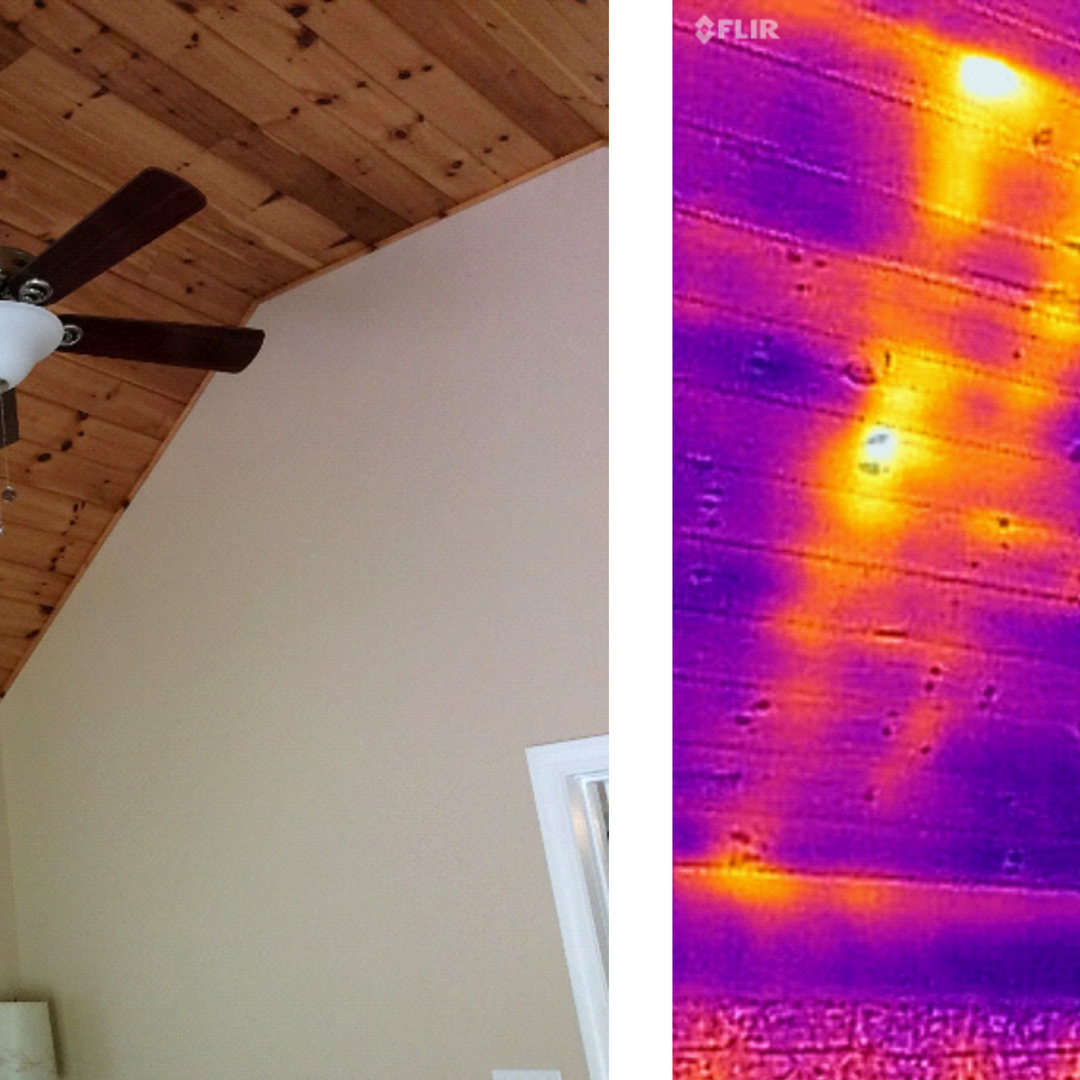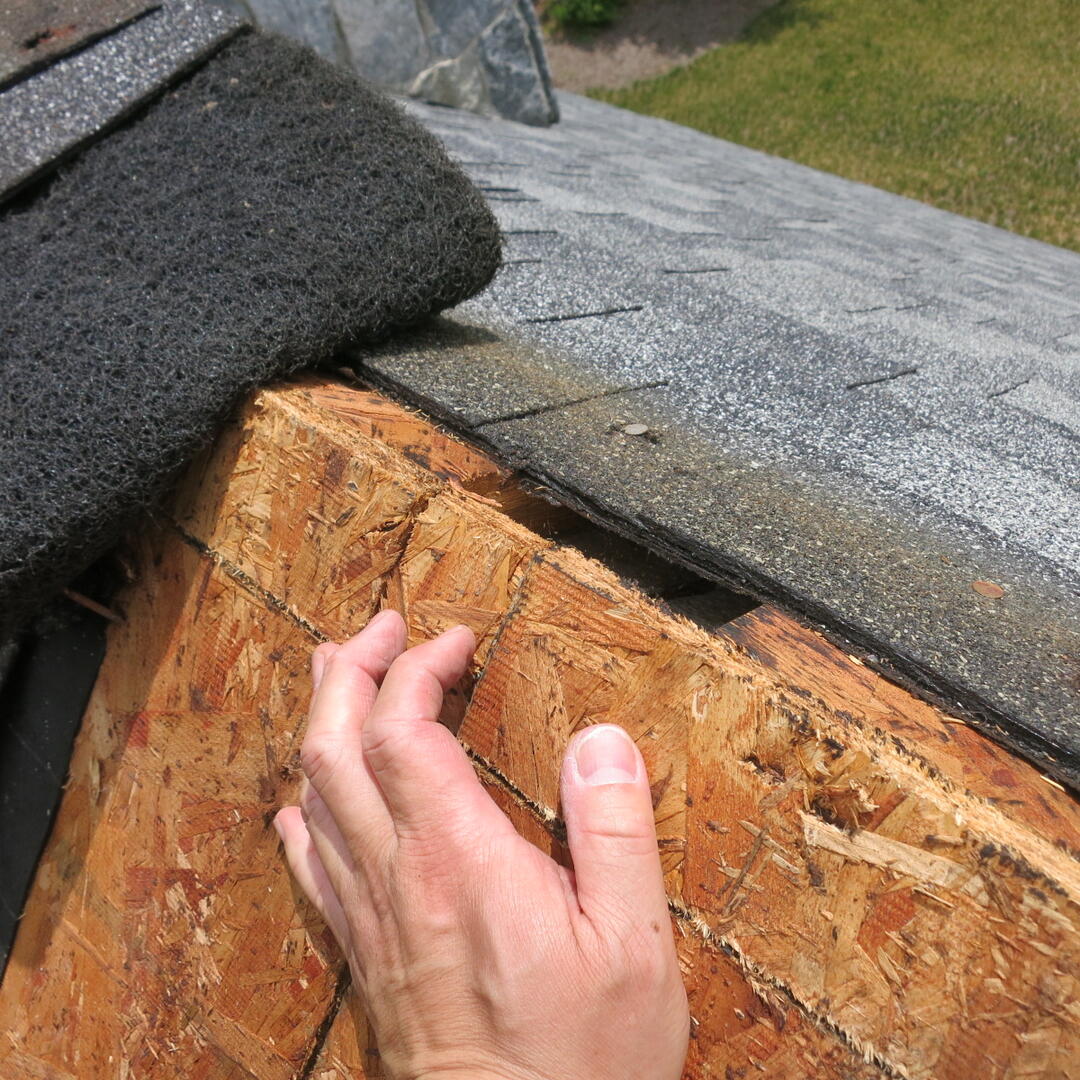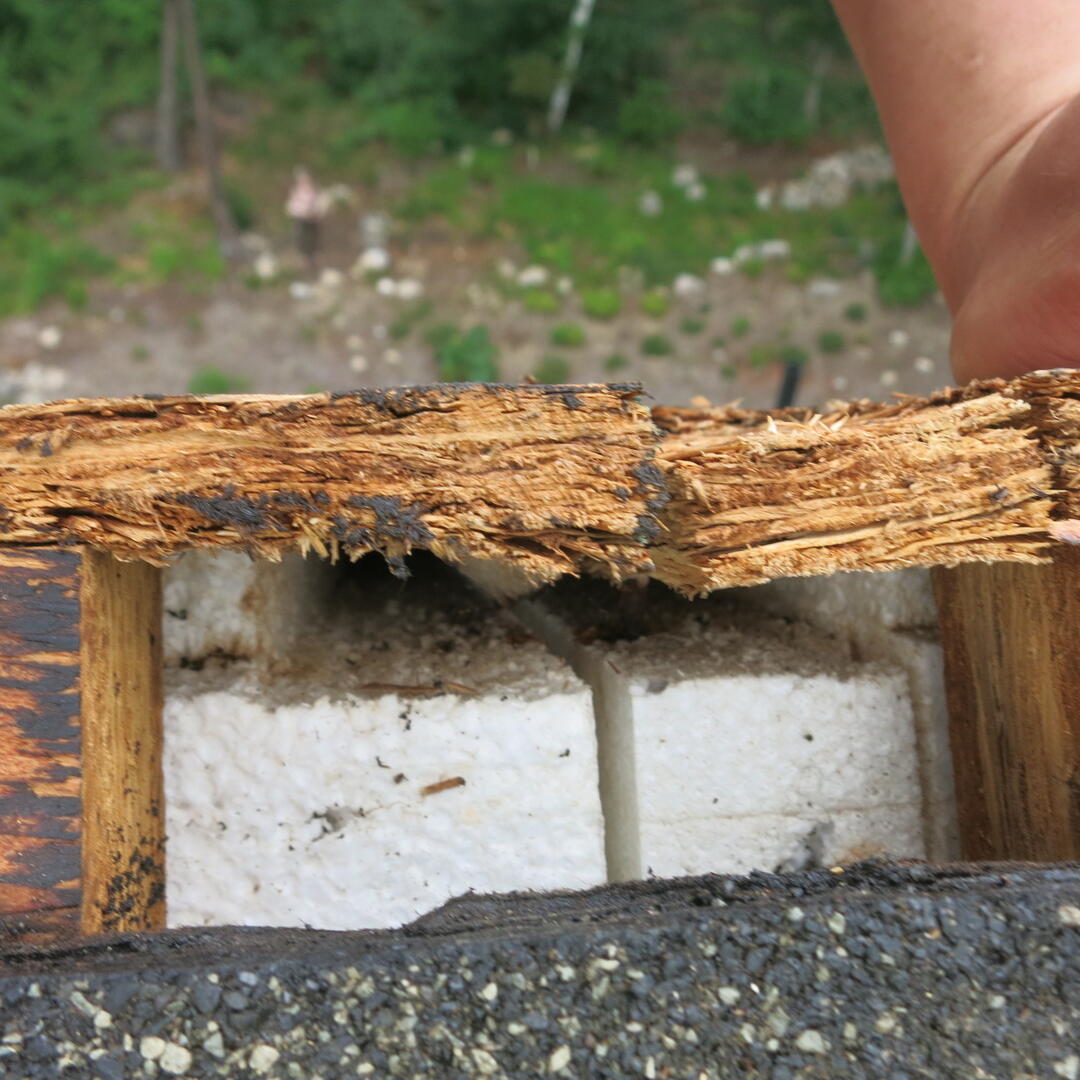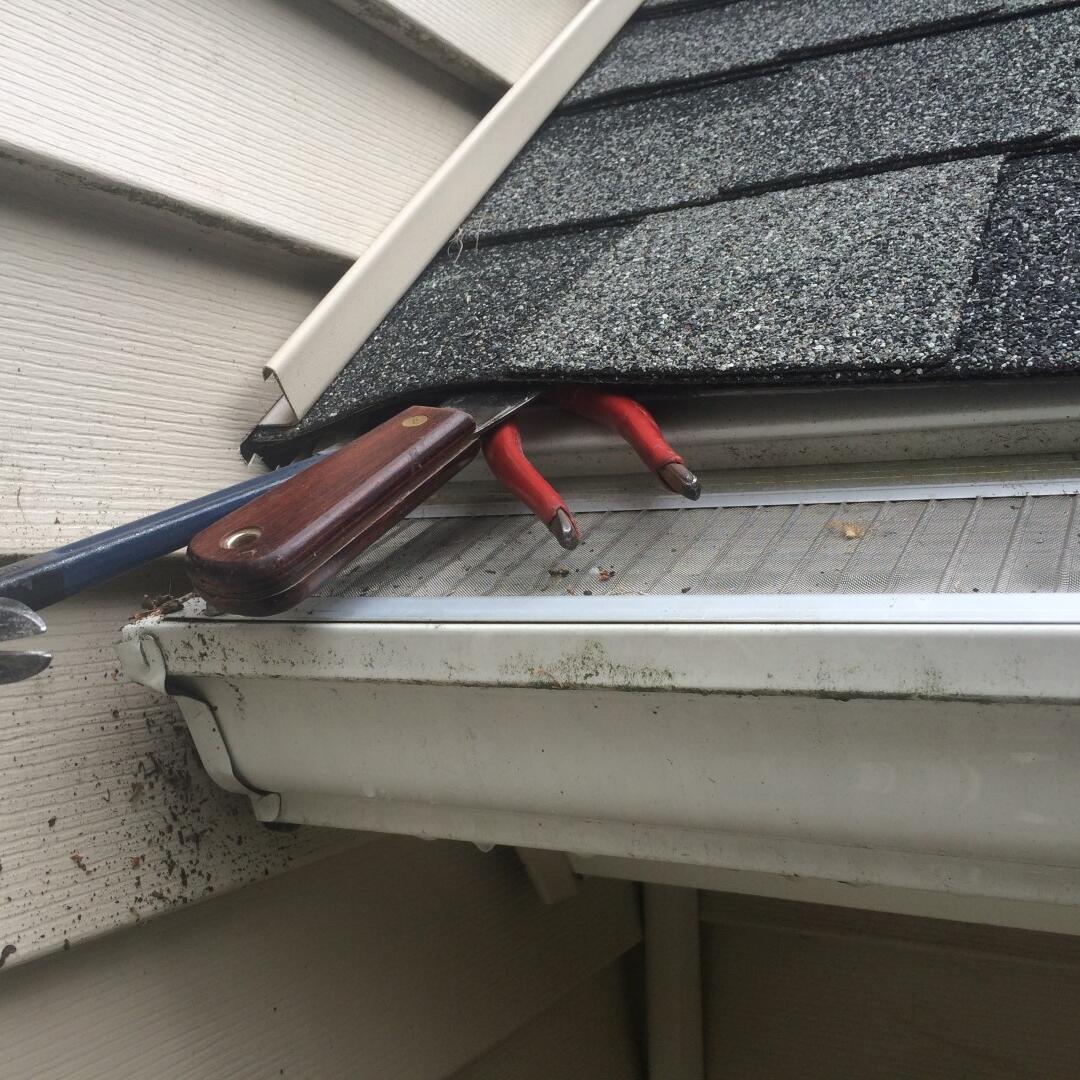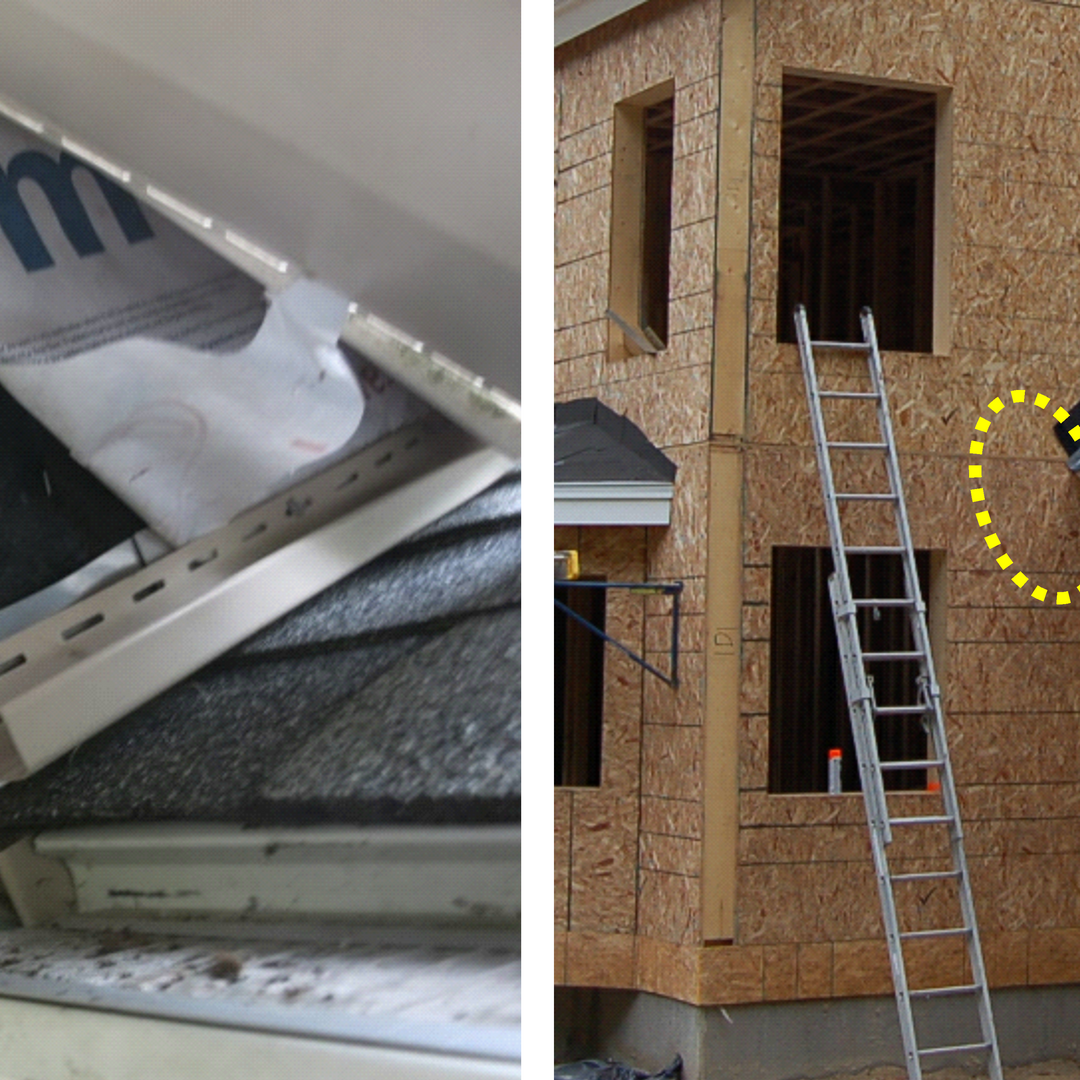BSC was asked to examine a 7-year old structural insulated panel system (SIPS) residence that had exhibited seasonal asphalt shingle ridging and ant infestation issues. These shingle ridging problems were worst in winter, and on the north elevation.
Investigation with blower door depressurization and infrared thermography revealed significant air leakage at panel seams; this air leakage appears as warm anomalies in this summertime investigation. Air leaks were pronounced at the attic ridge beam, where application of an interior tape seal would be difficult during construction. These air barrier deficiencies allow interior air leakage into the panel system, resulting in ridging due to moisture deposition and localized OSB skin expansion and contraction.
A roof panel seam was disassembled from the exterior, to determine whether this air leakage caused any damage. Wood moisture contents were low, and the OSB was intact and dry, reflecting summertime conditions. The roof had been retrofitted with a ridge vent (allowing outward leakage of moist air) as a remediation to avoid moisture problems, but with negative energy consequences.
Recommended solutions included retrofit air sealing from the interior with flashing tape, foam injection at the panel joints, and post-retrofit air leakage testing.
Another issue was ant infestation and visible “crumbs” of foam at the interior of one room. This was found to be caused by a poorly detailed roof-wall flashing, including a vinyl siding J-channel directing water accumulation behind the cladding. This resulted in wetting of the SIPS skin, making it vulnerable to infestation. Retrofit of a kickout flashing was recommended at this detail.
eBook - Builder's Guide to Structural Insulated Panels (SIPs) for all Climates

